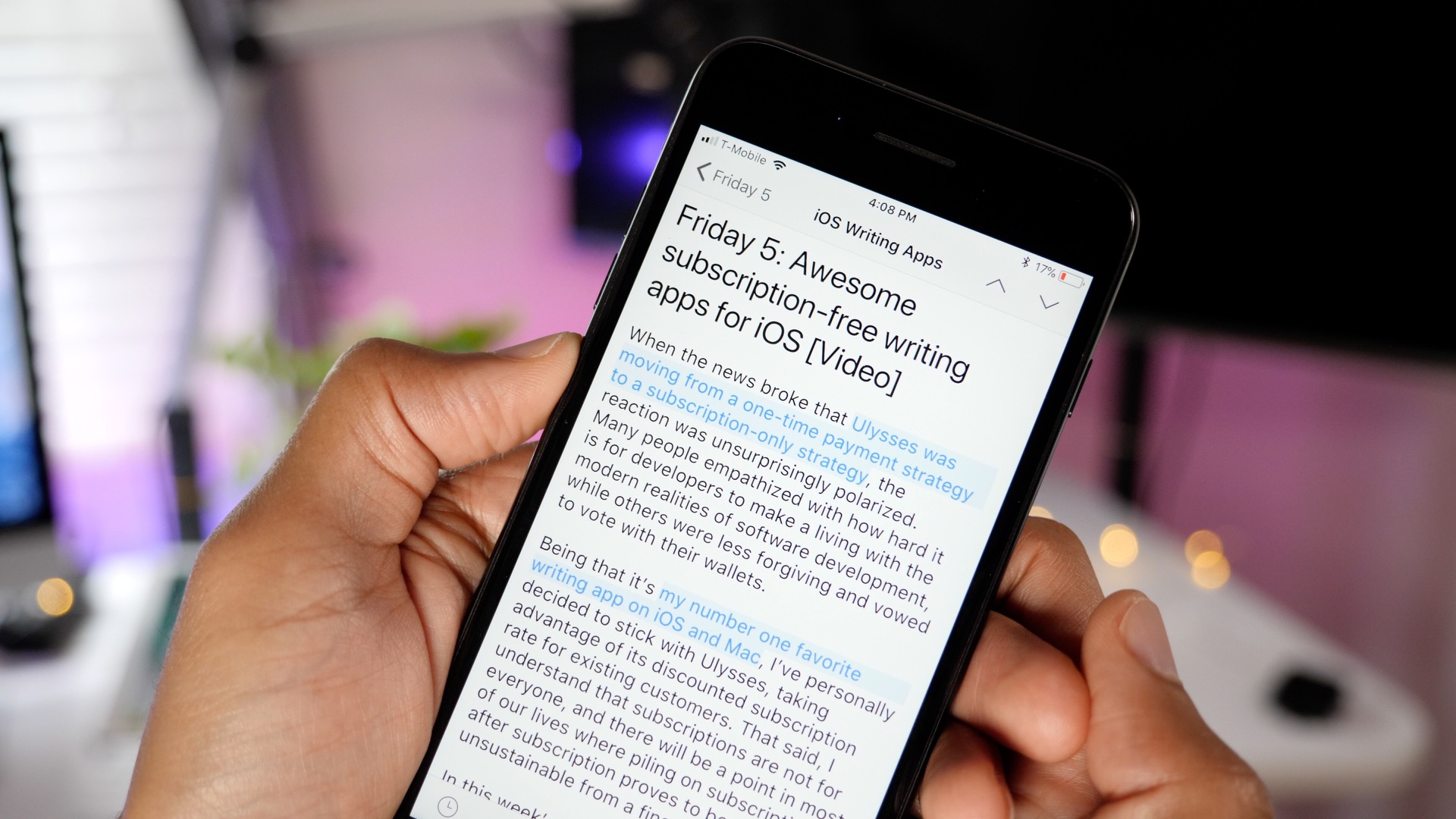

SCRIVENER FOR IOS YOUTUBE ARCHIVE
I detailed my experience in Monthly Log: March 2016 and MacStories Weekly: Issue 52 for Club MacStories members (both available in the full archive of back issues).This is everything you need to know to get up and running with Scrivener for iOS in ten minutes. I also want to learn Coda better and use it for basic web development on my server. This could be remedied by the ability to backup media items in batches, a second Lightning port on the iPad Pro, or an adapter to allow for dual Lightning usage at the same time. This has been a problem to transfer my entire Photos library to the drive: the iPad Pro, even when fully charged, runs out of battery in the middle of the process and the transfer can't be completed. The Rockstar is limited to charging and audio, while the iXpand app doesn't recognize the drive if plugged in over USB instead of Lightning. I have tried with both the Belkin Rockstar adapter and the Lightning to USB 3 adapter, but iOS doesn't recognize the drive with neither of them. ↩︎Īlas, you can't charge an iPad and simultaneously keep the iXpand Drive plugged in. Though I would love having USB-C support in the future. I recently bought one of these Lightning drives – a 64 GB Sandisk iXpand Drive – thanks to a discount on Amazon, and I think it could be a solution for those times when someone asks me to transfer a file locally to their computer. There are, however, Lightning accessories that can plug into an iOS device and that have a standard USB connector on the other end.
SCRIVENER FOR IOS YOUTUBE PRO
Obviously, there is no USB port on the iPad Pro 16 and I can’t use traditional USB drives. External USB DriveĪnother iPad workflow I’m experimenting with is a way to move files to desktop computers using an external USB drive for iOS.

It would be even better if Apple fixed this entire situation at a system level with audio API changes in iOS. I really don’t want to use my MacBook Air anymore, and podcasting is my top priority to figure out over the next year. I have bought a Tascam AC adapter from Amazon, but it hasn’t arrived yet, so I haven’t been able to test if this will work in practice. This means I would have to power the Tascam device separately, then plug it via USB into the Lightning adapter, and hope for the best. I tried with different power bricks (including the 29W one), but the microphone plugged into the Tascam never appears as an input device in Ferrite. My other problem is that, while my MacBook Air can power the Tascam interface over USB, not even the Lightning to USB 3 adapter on the iPad Pro is enough to charge the iPad and power the Tascam interface at the same time. It’s less than ideal (other people on Skype don’t hear the good microphone’s version of another person’s voice – they hear the EarPods version), but it’s good enough, and it’s been working well for Fraser for over a year. This forces him to wear two pair of EarPods with a bud in each ear, so he can hear both me on Skype and his voice for the local audio recording. The solution I’m considering is based on what my Canvas co-host Fraser Speirs does: he uses two devices – an iPad Pro and an iPhone – to join a Skype call (on the iPhone) and record his local audio track with Ferrite (on the iPad Pro).

No accessory or workflow is going to solve this Apple needs to rebuild the iOS audio stack and make it like macOS’, where one audio track doesn’t take over the other. The issue lies in an intrinsic iOS limitation: the iPad can’t handle multiple audio streams at once, so I would have to choose between talking on Skype or recording my end of the conversation. I’ve yet to find a solution to the problem of simultaneously holding a Skype call with other people and recording my own audio with a Shure microphone I plug into a 2x2 Tascam USB interface. Of all the tasks I wanted to transition from macOS to iOS on my iPad Pro, podcasting is still the holdout. Along with iThoughts, Scrivener is another app I’m going to use again for my iOS reviews.

The app allowed me to organize my writing, notes, and research material in a single place with a structure that wouldn’t have been possible in any other text editor. Scrivener proved to be an invaluable asset this year. While I was editing, I could glance at a document, view what colors stood out, and get an idea of which images were going to be used and which parts needed more work. Longform Writing and Research with Scrivener 10.Email Management with Airmail and Sanebox 6.


 0 kommentar(er)
0 kommentar(er)
